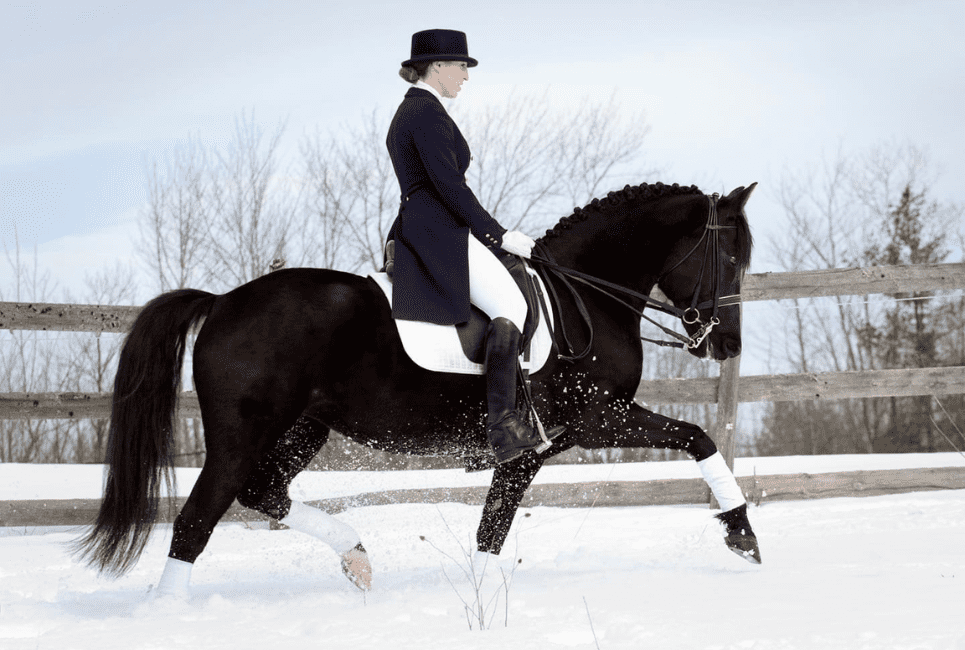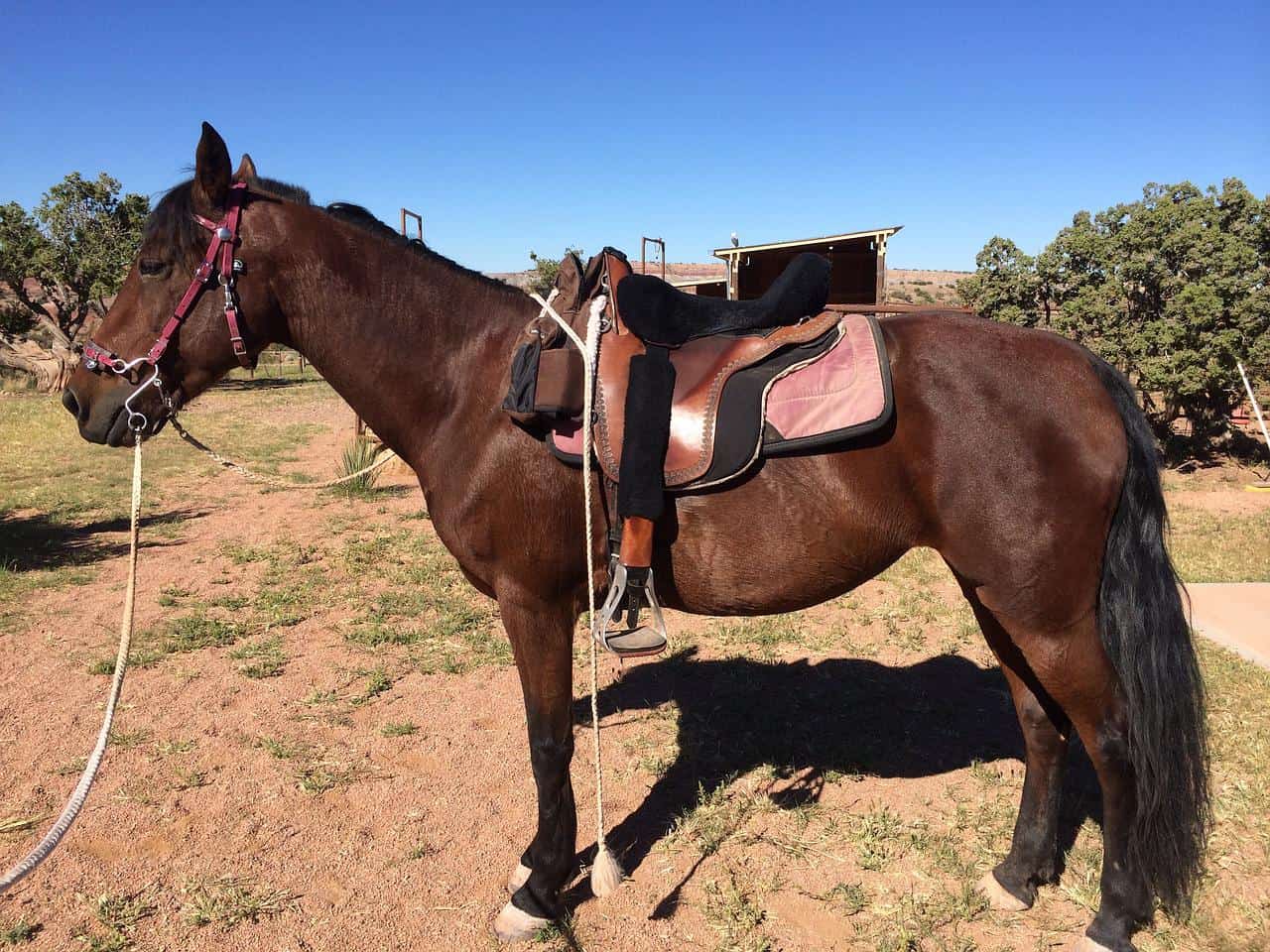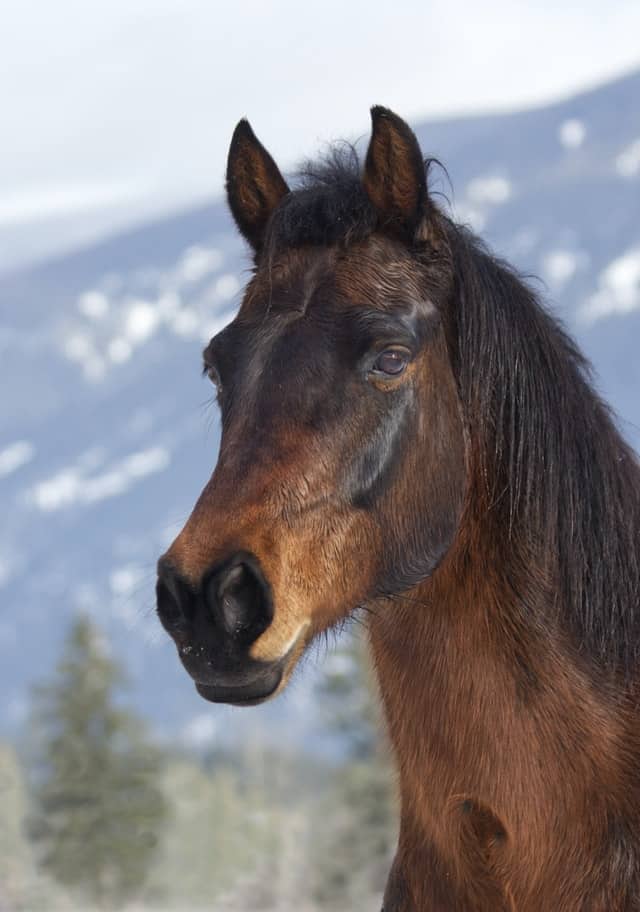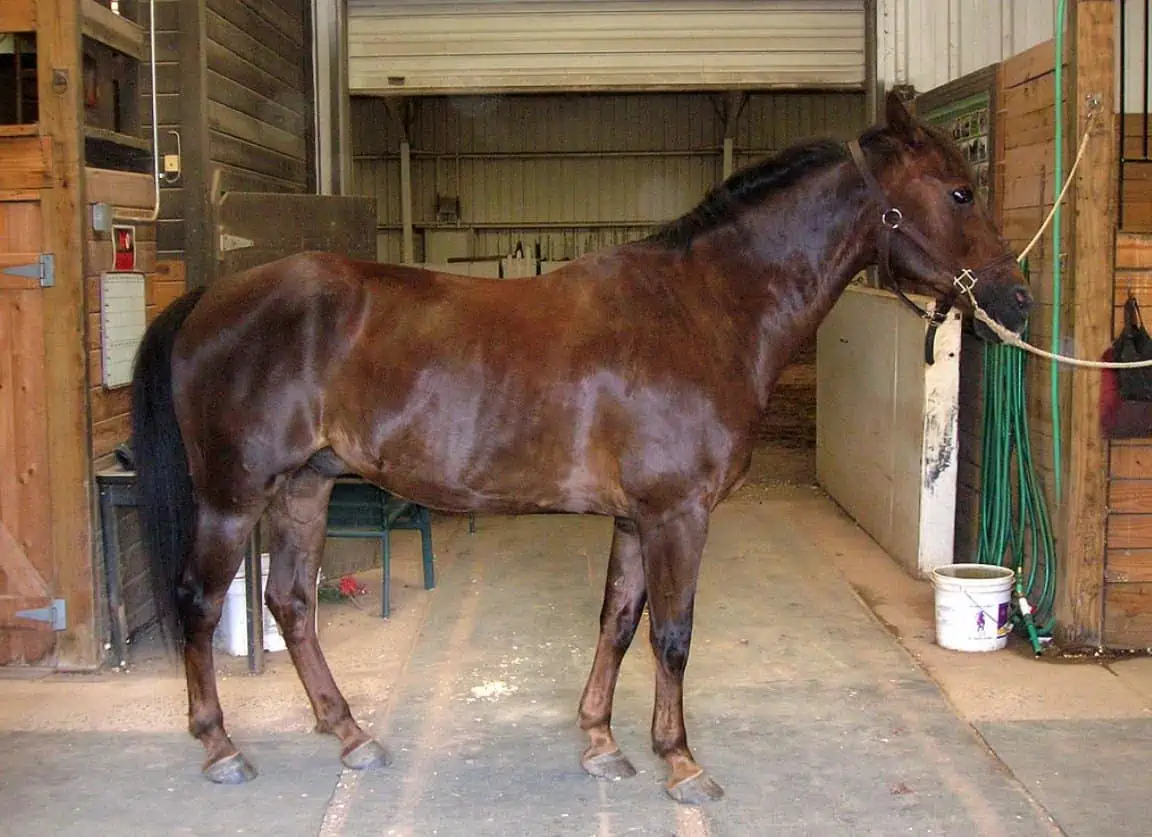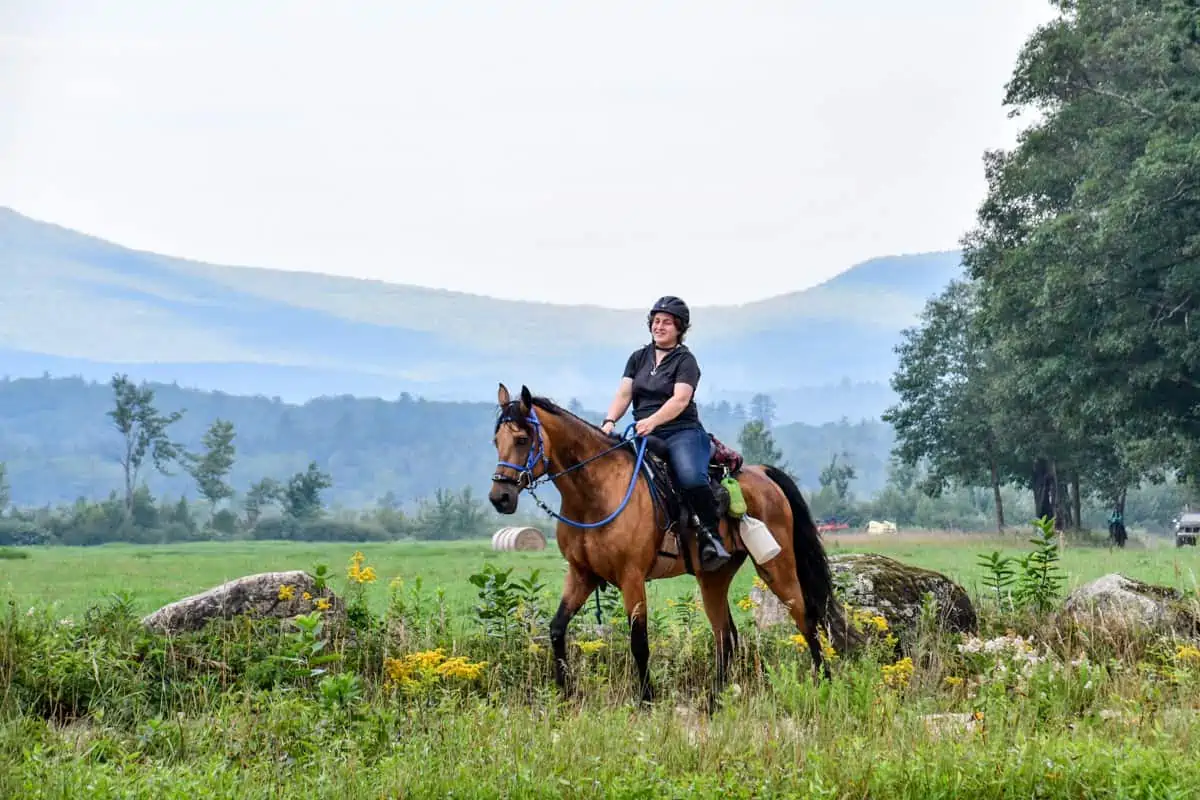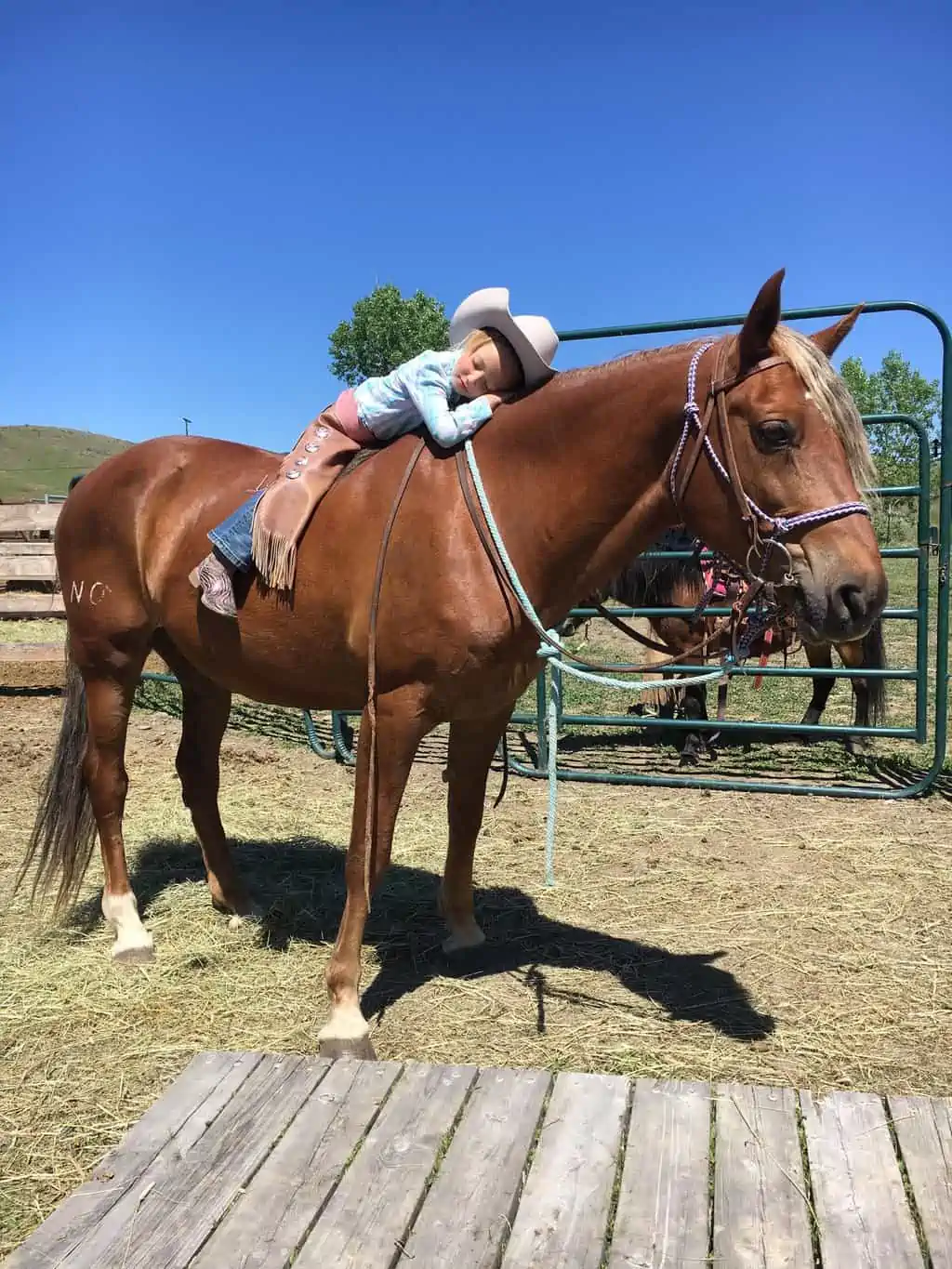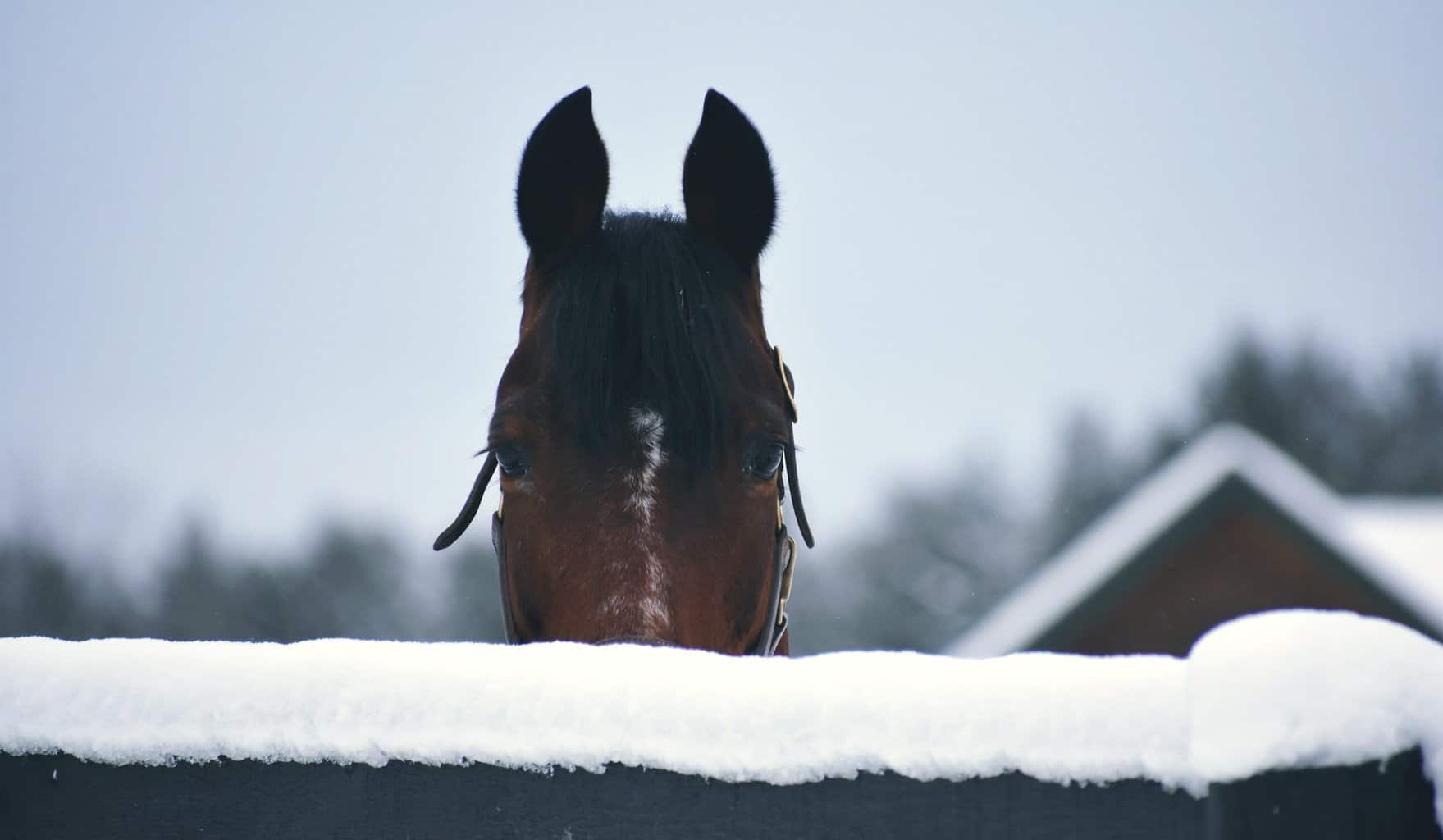- Best Horse Show Halters Guide - July 13, 2022
- Best Bareback Pads Guide - July 5, 2022
- Best Western Bitless Bridle Guide - July 3, 2022
- Morgan Horse Quick Facts
- Morgan Horse Overview
- How to Identify Morgan Horses
- Morgan Horse Lifespan
- Morgan Horse Appearance and Varieties
- Morgan Horse Human Interactions and Training
- How to Care for a Morgan Horse
- Morgan Horse Diet
- Morgan Horse History
- Morgan Horse Breeding
- Morgan Horse Cost
- Where to Buy a Morgan Horse
- Famous Morgan Horses
- Resource Citations
Imagine, for a second, that you were settling your family in hard to reach and utterly wild section of Vermont. The west was not even a flickering thought in the back of your mind. The majority of the east coast of what would be the United States was as wild (in your eyes) as anywhere in the world. You needed to spend some of your scarce resources, either in money or trade, on a reliable and intelligent horse to help in your endeavors.
If you had remained in Europe, your needs might not be so vast, but here in the “new world,” your horse must accomplish a large and varied task list every day. They also must do it safely, with an agreeable demeanor. There was no hospital and sometimes no help on your homestead, but the lion’s share of work was to be done.
Additionally, the more your new horse could get out of whatever grain and hay you had to feed it, the better off your whole family would be—introducing the Morgan horse, the very first breed created in America.
Morgan Horse Quick Facts
- Horse Family: American Work Horse
- Horse Breed: Morgan Horse
- Common Names: Morgan
- Country of Origin: United States of America
- Breed Origin: Speculative, a combination of outstanding workhorses of the time
- Height: 14.1 to 15.2 hands
- Weight: 900 – 1100 lbs
- Color: Bay and Chestnut are classic Morgan colors, but others may be registered
- Coat Quality: Short and thick
- Body Hair: Medium length tail and mane
- Temperament: Hard working, intelligent, and extremely trainable
- Lifespan: 30+ years
- Purpose: Morgans excel in various disciplines, both English and Western. Versatility is one of the breed’s most valued strengths.
Morgan Horse Overview
The wild United States needed reliable horses that could perform many tasks. Not only that but these horses were required to have reliable temperaments and sturdy builds to be helpful companions in the wilds. The morgan horse was one of the first breeds created in America. Typical of the time was bred as a multitool instead of honing in on a specific purpose.
Morgan horses pass these tests with flying colors. Their calm temperaments and agreeability contributed to their massive success as a breed. When the breed was founded in 1700s Vermont, they were acknowledged the most for their versatility. Morgan horses excel at groundwork, jumping, long-distance races, dressage, and pulling. You will find them outperforming larger horses in many show rings around America.
Morgans have been bred into many other, newer breeds to pass along their musculature, good temperaments, and intelligence.
How to Identify Morgan Horses
While Morgan horses may be most well known for their calm demeanor, we shouldn’t overlook their athleticism and striking appearance. Their high carriage and fluid movements can identify them. Morgans are such graceful movers they are highly sought after for children and as therapy horses.
Morgans are also on the shorter side of horse breeds, usually between 14 and 15 hands. They are compact and muscular. With their arched necks and graceful movements, you may initially confuse a Morgan horse with an Arabian horse. Still, you’ll notice Morgan horses have much stockier builds. You may confuse a stockier Morgan with a Quarter Horse.
Still, you’ll notice they carry themselves with much more action and a higher carriage than a Quarter Horse would. The original intention was for the Morgan horse to get the most from their oats or, in non-equestrian terms, be highly efficient for their upkeep requirements. This quality means their build is as efficient as possible.
Morgans may come in any recognized horse color, though they were initially known for their classic bay or chestnut coloring. There are far more bay and chestnut Morgans to this day.
Morgan Horse Lifespan
Morgan horses have a slightly longer life span compared to other horses. Whether it’s due to their reduced stature, or their inherent good health and toughness, Morgan horses typically live over 30 years. Figure, the first Morgan horse in Vermont outlived his owner to 32 years old. This was a very long time for a horse to live in the 1700s. He may have lived even longer but was taken down by another horse’s kick to the head.
Morgan horses also have very few health issues as a breed. They were bred to be as low maintenance as possible, and a horse with health issues would simply not be bred. If they were already bred, their progeny might not be considered to continue the line. The first Americans couldn’t afford horses with special requirements.
Morgan Horse Appearance and Varieties
Morgan horses are compact yet graceful. There is no official history on their contributing breeds. Still, it is speculated they descend from Arabians, Welsh Ponies, and Thoroughbreds. Their stout nature may confuse some, but they are graceful and smooth movers.
A Morgan horse carries its head high in a regal carriage that distinguishes it from similar breeds. Their crested neck and small ears make them stand out when walking into a show ring.
Morgan horses have no official height limits or weight limits. This means the breed can vary as much as the breeders desire. Morgan horse breeders respect their breed’s small stature, and you typically won’t find a Morgan much over 15 hands. Their hind end musculature and a high carriage are interesting combinations of their overall athletic nature. Morgan horses typically come in bay or chestnut but can be found in any color.
Morgan Horse Human Interactions and Training
Now, this is where Morgan Horses truly shine! Morgans can be trained for any task; this quality is the pride of their breed. As the first American breed, they were expected to perform any and all tasks on early homesteads. As the breed grew in popularity, they were shipped down the coast and into urban environments.
Here they would be used as reliable transportation, carriage pullers, racehorses, and recreational horses. Due to their temperament, equestrians used the Morgan horse to create many other breeds (such as the Quarter Horse).
Today, Morgan horses follow in their ancestor’s hoof steps. They are highly trainable horses. This makes them excellent for riders of any age or experience level. A Morgan horse has a level head and a drive to please its human.
You’ll find Morgan horses in dressage, jumping, driving, cutting, and pleasure classes. Morgans make fantastic trail riding and working horses outside of the show ring. Morgans are known to dominate the competition in long-distance races and single-driver carriage races, in particular.
How to Care for a Morgan Horse
Morgan horses are one of the easiest to care for breeds. Relative to other breeds, they are a wise economic decision and investment.
Not only do they live longer, but they are unlikely to have many health issues. Take it from the American Morgan Horse Association, “…Morgan thriftiness and longevity have made this breed a good bargain for more than 200 years—easy to love and affordable to own.”
Morgan horses enjoy training and working but can also thrive as a lesson or therapy horse. Unlike other similarly athletic breeds, they do not need a confident or experienced owner. They also don’t need to be constantly challenged or put to task. They are the definition of laid-back, agreeable horses.
Morgan Horse Diet
Morgans were explicitly bred to rely on less grain, hay, and grass. Unfortunately, now that humans that own horses generally have access to an excess of these resources, a Morgan horse’s number one health problem is being overweight.
Feed your Morgan a high fiber, appropriate calorie diet. You will certainly save on grain and hay when you appropriately feed a Morgan horse.
It may be challenging to find a large scale to weigh your Morgan, but there are other ways to keep a tab on their fat percentage. Start by wiggling your Morgan’s crest or the fat deposit along the top of their neck. There should be no more wiggle than what is necessary for their muscle and mane. Fat is often deposited here on a Morgan, and it may be your first sign that your horse is overweight.
You should also be able to see your Morgan’s ribs as they bend outward from you. A Morgan may not always show their ribs while standing neutrally, they are a stockier breed after all, but at the very least, you should be able to feel them.
Morgans also hold fat in their hindquarters. They were bred to have exceptionally large hind quarters already, but they should still slope downward when looking from behind. If you notice a gully between them or an M shape from behind, your Morgan horse is definitely overweight.
You may consider taping your Morgan, but you’ll have to do it consistently to get a feel for healthy measurements and overweight measurements.
Morgan Horse History
The original Morgan stallion, Figure, was owned by a Vermont schoolmaster named Justin Morgan. He started making a name for himself in the 1780s and was not officially registered as any breed. Figure was simply part of a payment for a debt; a bay stallion with exceptional build and demeanor.
He was initially known by townsfolk for his incredible ability to pull stumps, outperforming larger farm horses and costing Justin far less feed to get the same job done. He began winning races and pulling competitions and was recognized for his agreeability and even temperament.
He became a parade horse and a stud. His legacy may have ended in the early 1800s, but he had something not every stallion possesses. High prepotency, or the effectiveness a horse has of passing on its traits, was one of the Figure’s most essential qualities.
The breed was named after Justin Morgan himself and was the first breed created in the “new world.” It also quickly became the most popular breed in America. The breed’s versatility made it the ideal horse for early European colonizers. Even as urban areas developed, the Morgan was the preferred horse in the United States for street transportation, carriage horses, and farm horses. They were also the most used cavalry horse during the civil war.
With the invention of the automobile, horses became specialized assets. This is where we almost lost the Morgan horse. If a farmer was looking for a working horse, they would likely be more interested in a much larger draft horse. Ranchers were more interested in the sturdy and incredibly quick Quarter Horse. The desired build for recreational horses became much larger.
Morgan mares were often bred to thoroughbreds for the show ring. The breed became so rare that the government intervened. They bought and ran a Morgan breeding program until the horses could recuperate on their own. Morgan horses built America; it was the least we could do for them.
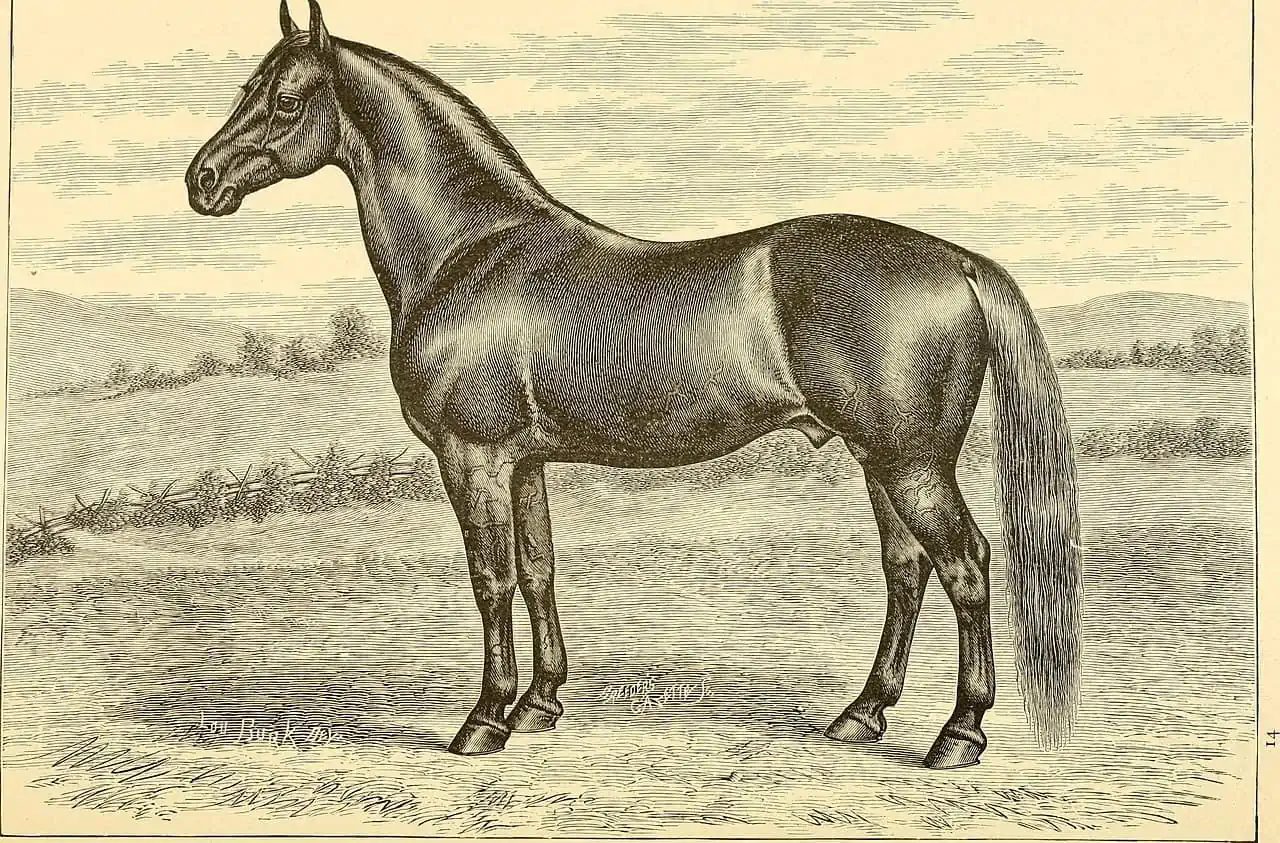
Morgan Horse Breeding
Morgan horses are bred for every discipline. There are driving Morgans and show ring Morgans. Ranchers still swear by the reliability of a Morgan ranch horse, even as cutters and roping horses. Children often receive Morgans as their first horse, and they are sought after as therapy horses and trail horses.
Their crested neck and flashy movement make them stand out in a show ring. Their easy demeanor and athletic build put them at home everywhere else.
Be wary because there is no official breed standard for height and weight, and Morgan’s are generally affordable horses; many people label (or even register) subpar horses as Morgan horses. A Morgan horse should be of a reputable line. They will be stocky with a regal carriage and small ears.
The easiest way to verify your breeder is by checking their show record. Regardless of the discipline, passionate breeders show their horses. It’s not just about effort; showing your horses is the only way to ensure they are high enough quality to breed. There is no better way to compare them against their own breed and others.
Morgan Horse Cost
Morgan horses are affordable horses, not just in terms of upkeep but also in their purchase price. In recent years, horse prices have skyrocketed, but a well-bred, two-year-old ready for training will run you around $4000.
A well-trained, young Morgan will cost at least $8000 but can be much more expensive depending on their discipline and accomplishments. An older kid-friendly Morgan horse will be less expensive, even creeping back to $5000.
Where to Buy a Morgan Horse
You will find Morgan breeders predominantly across America and Canada. I always recommend buying from a reputable breeder, especially if this is your first horse purchase. Use the American Morgan Horse Association’s directory to find a breeder in your state and give them a ring to set up a visit.
You may find a nice Morgan horse on an online marketplace. This isn’t the worst breed to purchase in this manner, but be sure you know their breeding lines and their accomplishments (or the accomplishments of their parents).
There are many, many listings for Morgan crossbreeds or “fully registered” Morgan horses that do not represent the breed well. You may be looking for a deal, and Morgan blood is certainly only an asset, but make sure you don’t fall for a downright lie.
Famous Morgan Horses
While Figure is famous as the founding stallion, many of his offspring also make a list. Sherman Morgan, Bullrush Morgan, and Woodbury Morgan were all famous in and around New England and New York. These horses, and their progeny, made names for themselves as horses of all work, with champion trotters, racehorses, jumpers, and parade horses in the line.

